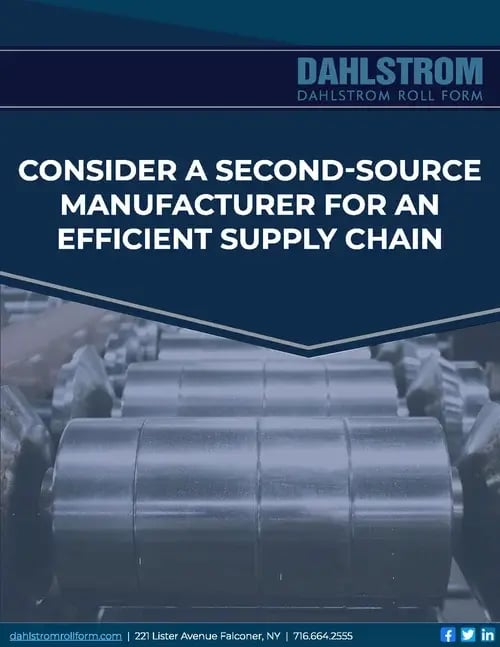NEED A MORE EFFICIENT SUPPLY CHAIN?
Consider a second source supplier
Have global supply chain crises created problems for your business? Your supply chain strategy should allow you to be prepared, agile, and resilient. Partnering with a second-source supplier is an effective supply chain strategy. Find out why.
This guide covers:
- What a second-source supplier is
- Pros and cons of a second-source supplier
- Developing a dual-source strategy
- Why reshoring is important
- and more!
What is a Second Source Supplier?
A second source supplier is exactly as it sounds: using another supplier for your roll-forming needs. Also considered dual sourcing, this involves having a reserve roll former who can pick up your work if your primary source is unable to.
Dual sourcing could also look like giving 75% of your work to one roll former and 25% to another. If one roll former experiences trouble, you already know your other partner can produce what you need.
Developing a Dual Source Strategy
For strategic supply chain management keep these things in mind when considering a second-source roll forming supplier:
- Is the supplier reputable? What are their customers saying about them? It may be worth a call to a couple of customers to hear their impressions.
- How is their customer service? You want a partner that will respond to your needs. They should communicate regularly and let you know if any problems arise.
- Can they produce the volume you need? We’re not just talking large volumes. Depending on your part design, volumes as low as 10,000 to 20,000 linear feet per year can be cost-effective.
- Can they keep your timeline? – This is where a supply agreement comes in handy. Your roll forming partner should be able to commit to your schedule or let you know if they can’t before the partnership begins.



